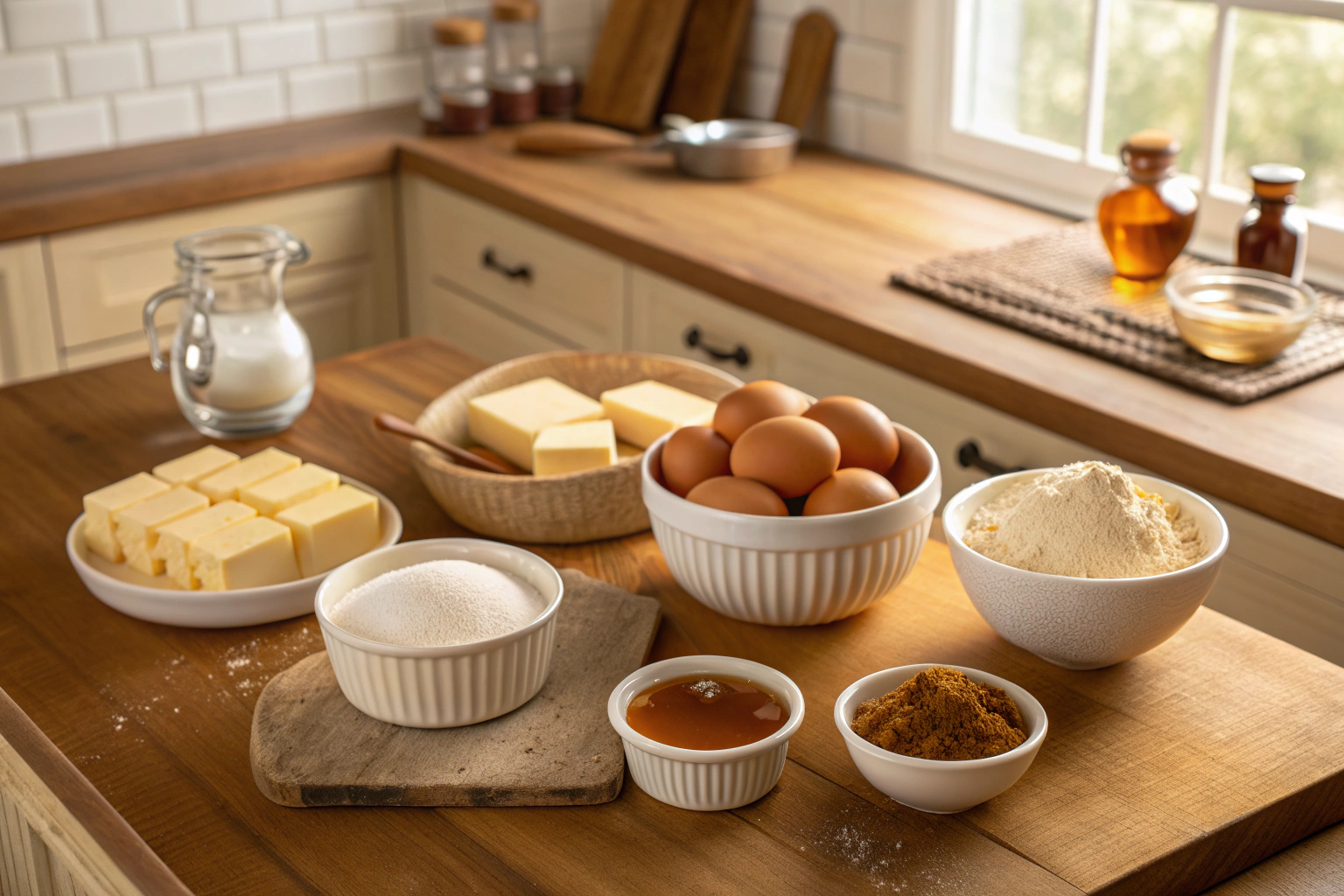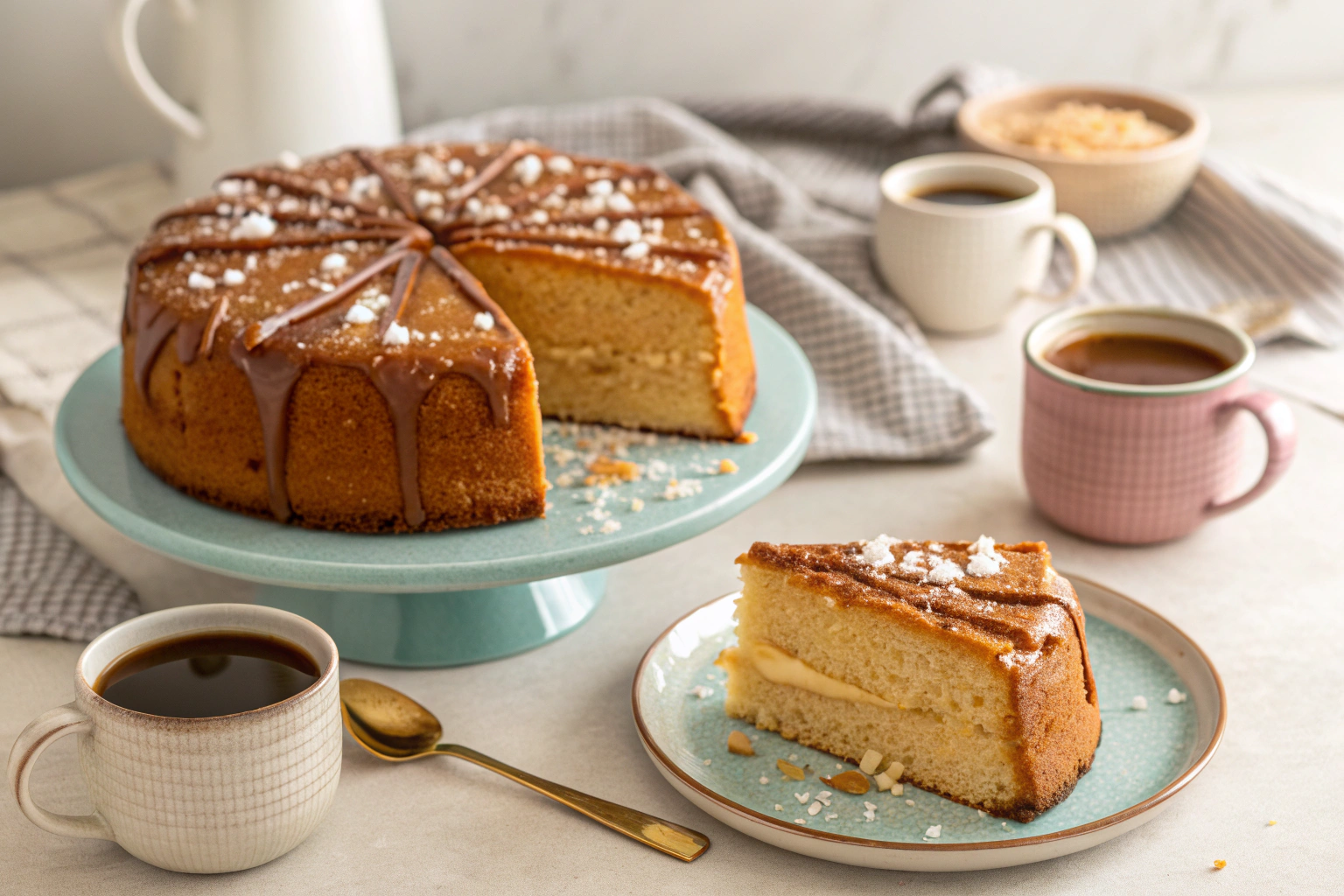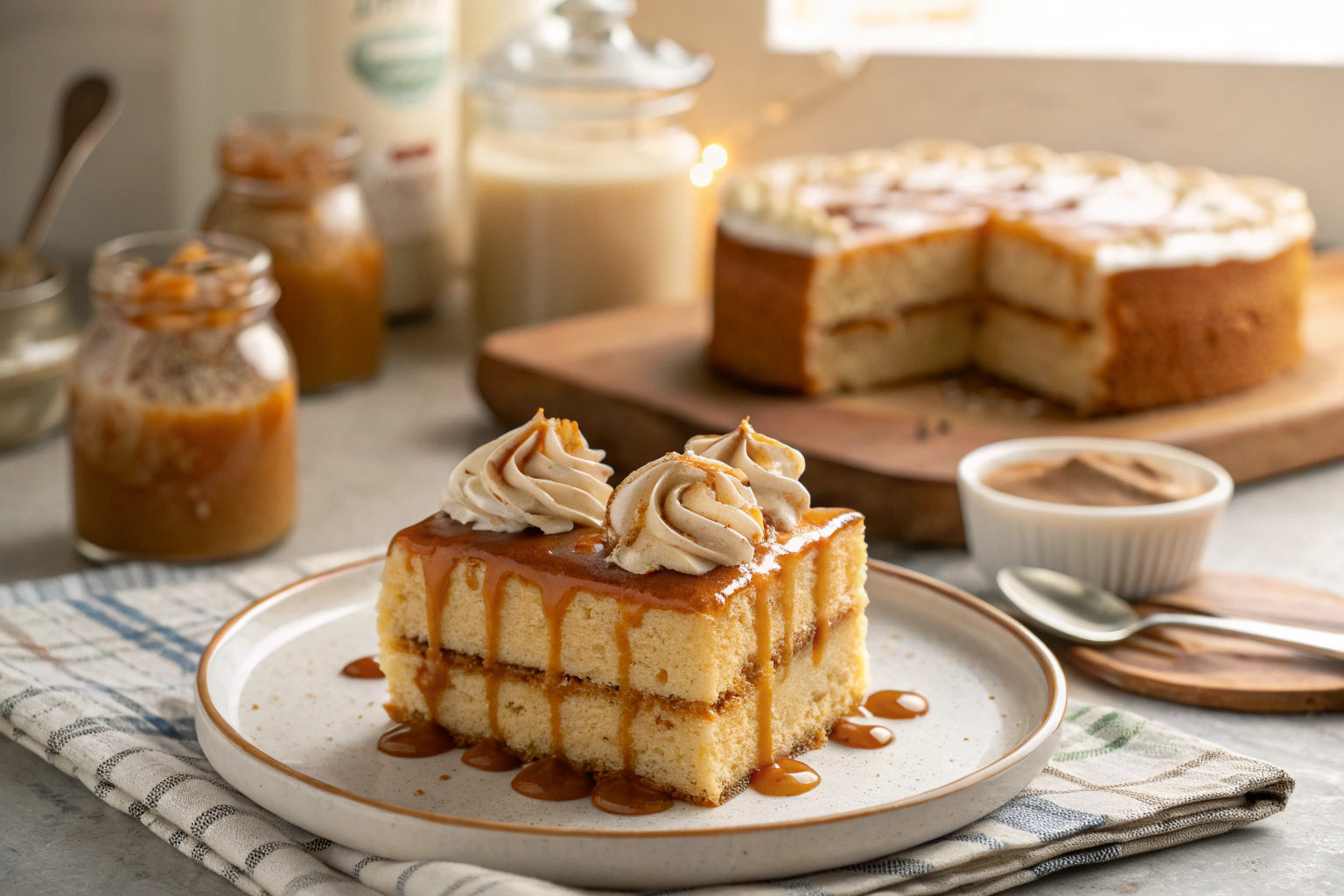🧂 Salted Caramel Butter Cake with Cream Cheese Frosting
If there’s one dessert that captures cozy indulgence in every bite, it’s Salted Caramel Butter Cake. This cake is soft, rich, and deeply buttery — balanced by ribbons of caramel and a touch of salt that keeps each forkful perfectly sweet-salty. The creamy caramel-infused frosting ties everything together with tangy depth from cream cheese.
Whether you’re baking for a birthday, special occasion, or simply craving something decadent, this cake feels like a bakery masterpiece but is surprisingly easy to make at home. Each step is designed for approachable success — so even if you’re new to baking, you’ll end up with a cake that looks and tastes incredible.
The Secret Behind This Cake: Butter + Caramel + Salt
The magic of this cake comes from browned butter notes and homemade or store-bought salted caramel folded into a rich vanilla batter. The salt enhances every flavor, while the caramel adds moisture and complexity.
Meanwhile, the frosting combines cream cheese, butter, and salted caramel to create a silky, pipeable frosting that’s not overly sweet. As a result, the balance of flavors and textures makes this dessert both luxurious and comforting.
Ingredients

For the Cake
-
1 cup (227 g) unsalted butter, softened
-
1 ½ cups (300 g) light brown sugar, packed
-
½ cup (100 g) granulated sugar
-
4 large eggs, room temperature
-
2 teaspoons pure vanilla extract
-
2 ½ cups (315 g) all-purpose flour
-
2 teaspoons baking powder
-
½ teaspoon baking soda
-
½ teaspoon fine sea salt
-
1 cup (240 ml) buttermilk
-
½ cup (120 ml) salted caramel sauce, plus more for drizzle
For the Salted Caramel Cream Cheese Frosting
-
8 oz (225 g) cream cheese, softened
-
½ cup (115 g) unsalted butter, softened
-
½ cup (120 ml) salted caramel sauce
-
3–3 ½ cups (375–440 g) powdered sugar, sifted
-
Pinch of sea salt
-
1 teaspoon vanilla extract
Step-by-Step Instructions
Step 1: Prepare the Baking Pans
First, preheat your oven to 350°F (175°C). Grease and line two 8-inch round cake pans with parchment paper. This ensures an even bake and easy release.
Pro Tip: Lightly dust the pans with flour after greasing to prevent sticking and create a smooth edge around the cake.
Step 2: Cream Butter and Sugars
Next, in a large mixing bowl, beat together butter, brown sugar, and granulated sugar until light and fluffy — about 3 minutes. This step introduces air into the batter, which helps the cake rise beautifully.
Then, add the eggs one at a time, mixing well after each addition. Stir in the vanilla extract until everything is smooth and well-combined.
Step 3: Combine Dry Ingredients
In a separate bowl, whisk together flour, baking powder, baking soda, and salt. Gradually add these dry ingredients to the butter mixture, alternating with buttermilk.
Start and end with the dry ingredients, mixing gently between each addition. This keeps the batter tender and prevents overmixing.
Step 4: Add Salted Caramel
Fold in ½ cup salted caramel sauce. The batter should look creamy, rich, and slightly glossy. The caramel adds flavor depth while keeping the crumb moist.
Pro Tip: Warm the caramel slightly before folding it in so it blends smoothly.
Step 5: Bake the Cake
Divide the batter evenly between the prepared pans and smooth the tops. Bake for 30–35 minutes, or until a toothpick inserted into the center comes out clean.
Let the cakes cool in the pans for 10 minutes, then transfer them to a wire rack to cool completely.
Step 6: Make the Frosting
While the cakes cool, prepare the frosting. In a large bowl, beat cream cheese and butter until creamy and smooth, about 2 minutes.
Next, add salted caramel sauce, vanilla, and sea salt, then gradually add powdered sugar, beating on low speed until fluffy and thick.
If the frosting feels too soft, refrigerate for 15 minutes before spreading.
Step 7: Assemble the Cake

Place one cooled cake layer on a serving plate. Spread about 1 cup of frosting over the top. Then, place the second layer and frost the entire cake generously.
Finally, drizzle extra salted caramel over the top and sprinkle with flaky sea salt for an elegant finish.
Pro Tip: Use an offset spatula for smooth, even frosting edges.
Flavor Variations
-
Spicy Caramel Cake: Add a pinch of cinnamon, nutmeg, and cayenne to the caramel for a warm, spiced flavor.
-
Toffee Butter Cake: Fold in crushed toffee bits for added crunch.
-
Chocolate Caramel Twist: Replace ¼ cup of flour with cocoa powder and drizzle with chocolate ganache.
-
Espresso Caramel Cake: Stir in 1 teaspoon espresso powder to intensify the caramel flavor.
Each variation keeps the buttery texture intact while offering a unique twist for your taste.
Storage and Reheating Tips
Because this cake includes cream-cheese frosting, store it in an airtight container in the refrigerator for up to 5 days. Bring it to room temperature before serving for the best texture.
If you’d like to make it ahead, the unfrosted layers can be wrapped tightly and frozen for up to 2 months. Thaw overnight in the refrigerator before frosting.
Common Mistakes and How to Avoid Them
-
Overmixing the batter: Leads to dense cake. Mix only until combined.
-
Skipping buttermilk: This adds essential acidity for tenderness.
-
Cold ingredients: Use room-temperature butter, eggs, and cream cheese for proper blending.
-
Overbaking: Start checking at 30 minutes. The cake should be golden and springy to the touch.
-
Too-thin frosting: Chill it briefly if it becomes too soft to spread.
Why This Recipe Works
-
The salted caramel enhances sweetness without making the cake overly sugary.
-
Buttermilk keeps the crumb soft and moist.
-
Cream cheese frosting provides tangy balance to the rich cake.
-
Layering and drizzle technique create an elegant, bakery-style finish.
-
The recipe uses accessible ingredients yet feels special enough for celebrations.
Final Thoughts
This Salted Caramel Butter Cake with Cream Cheese Frosting is the kind of dessert that never fails to impress. Every bite melts into a balance of buttery richness, silky frosting, and caramel sweetness touched with sea salt.
Serve it at birthdays, holidays, or just a cozy weekend dessert — it always brings smiles and second slices. Once you bake it, it might just become your new signature cake.


